Exclusion fencing is a less common, but effective, method that is used to protect specific assets from the impacts of invasive animals, often feral cats and foxes, in Australia. Fencing is expensive but relatively straightforward – barriers are erected to restrict the entry of invaisve predators into an area, followed by the removal of any feral cats and foxes that remain inside the barrier.
The most widespread use of exclusion fencing in Australia is to protect areas or species of high conservation value from feral cats and foxes and to create refuges for wildlife.
Fox- and cat-proof fences are also used to help study environmental systems and to prevent them from accessing other areas, such as where livestock are kept, rubbish tips and carcass pits.
A range of fencing designs have been tested for excluding foxes and feral cats in Australia. Exclusion fences usually have a tight wire mesh, burrow-proof aprons, floppy or steel rolltops and electric wires to prevent climbing.
Fences need to be regularly monitored for trees or branches that have fallen over the fence and for other breaches of the fence. Gates and other access points are weak areas in exclusions fences. If a gate is not properly closed or does not have a trailing skirt animals can push under the gate when it is closed.
If properly maintained and monitored, exclusion fences are an effective tool for controlling the impacts of feral cats and foxes. However, it is important to consider the impact fencing has on the movements or genetics of native species. Additionally, fencing is expensive – the purpose of the fence and size of the area to be fenced is directly related to the cost of the project.
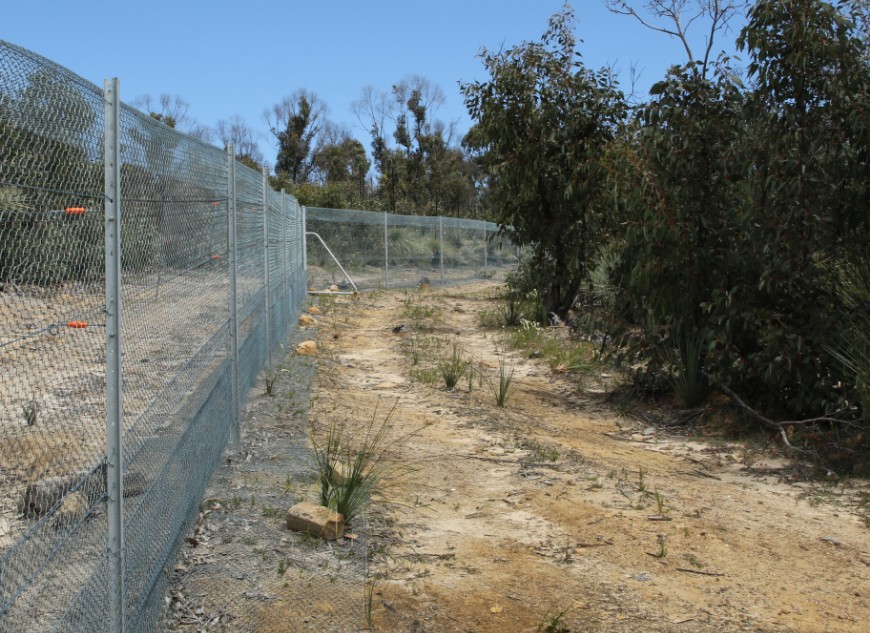
Feral-proof fenced area to protect threatened Kangaroo Island dunnarts from feral cats after bushfires. Photo: CISS, NFCFMC Program.
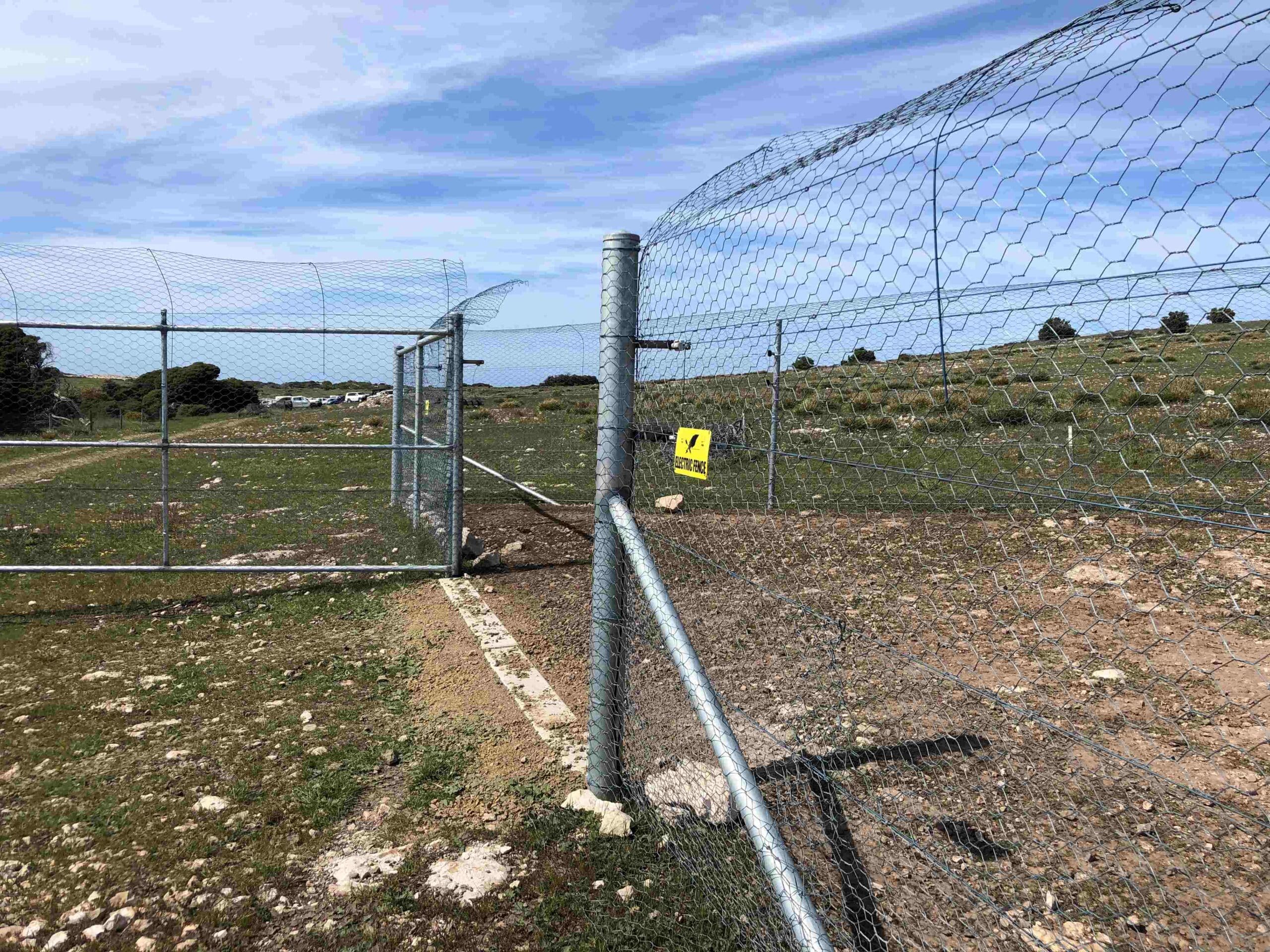
Gates can be weak points in predator-proof fences. Photo: CISS, NFCFMC Program.
Advantages
- Exclusion fencing is generally considered a humane, non-lethal alternative to other control methods, once foxes and feral cats have been removed from inside the fenced area.
- Exclusion fencing, combined with eradication inside the fences, is effective for protecting endangered species, particularly when they are being reintroduced to an area where they were previously extinct due to invasive predators.

Threatened woylie, susceptible to feral cat and fox predation, protected by a predator-proof fence. Photo: Gillian Basnett
Things to consider when fencing
- Fencing is expensive.
- The high costs of establishing and maintaining predator-proof enclosures limits their use to managing threatened or feral cat- or fox-susceptable species.
- Although exclusion fencing acts as a barrier to foxes and feral cats, it can have negative effects on off-target species by changing their movement and feeding patterns.
- Complete exclusion of introduced predators from fenced areas can increase wildlife naivety. Wildlife in the fenced area may have limited or no exposure to invasive predators, leading to a loss of anti-predator behaviours such as hiding, fleeing or alarm-calling.
- Some fence designs can cause entanglement or electrocution of off-target animals.
- Fencing can create a significant hazard to wildlife during a bushfire.
- Fencing must be adequately maintained and monitored to stop feral cats and foxes from breaching the enclosure. If breached, fences increase the risk of vulnerability of endangered species by preventing their escape from predators.
- Where more than one type of pest is a problem, such as feral cats, foxes, wild dogs, feral pigs and rabbits, then the design of the fence to be suitable for all pests, which may increase costs.

Monitoring inside the fenced area is vital for quick detection of any feral cat or fox that might breach the fence. Photo: National Wild Dog Action Plan.
Effective use
Before implementing an exclusion fencing plan, a range of factors should be considered at the design stage (see the catalogue of fence designs).
Maximise the effectiveness of an exclusion fence by ensuring that the fence:
- is appropriately designed for the local environmental conditions
- is designed for the behaviour of target and off-target animals likely to encounter it
- is well-constructed and maintained
- has a buffer zone surrounding it where feral animal populations are reduced.
When implementing a fox and feral cat fencing plan, also consider excluding rabbits. Rabbits are a principal food source for foxes and feral cats, as well as being an invasive herbivore that competes with native species for resources. Most fox and feral cat exclusion fences can also exclude rabbits with minor adjustments to the design.
For exclusion fencing to remain effective, regular monitoring and maintenance is essential to identify any damage that could allow feral cats and foxes to breach the fence. This monitoring and maintenace is time-consuming and can be costly, so this ongoing cost and resourcing must be included in the planning process.
Further information on the use of exclusion fencing in feral animal control is available on the PestSmart website:
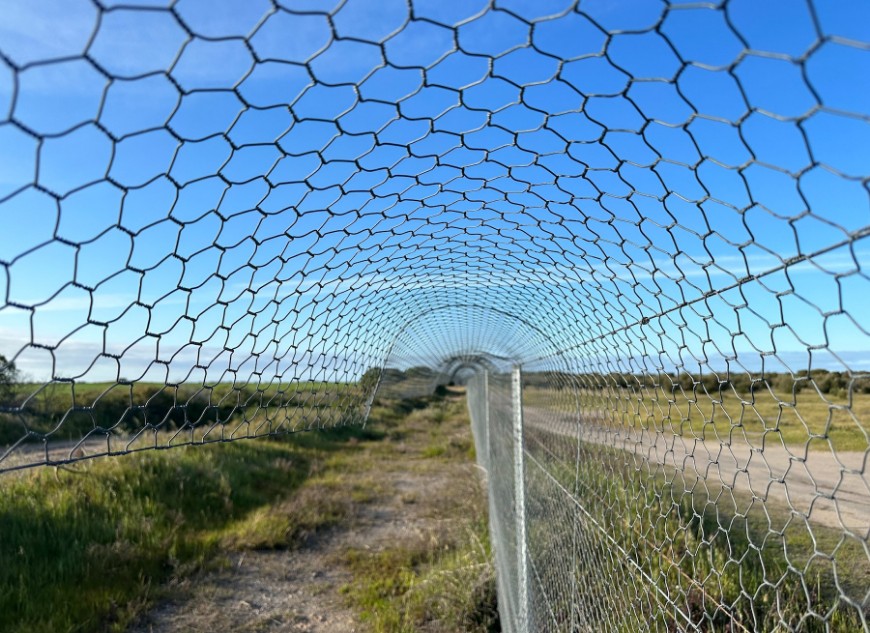
A floppy top prevents feral cats and foxes from being able to climb the fence. Photo: CISS, NFCFMC Program.
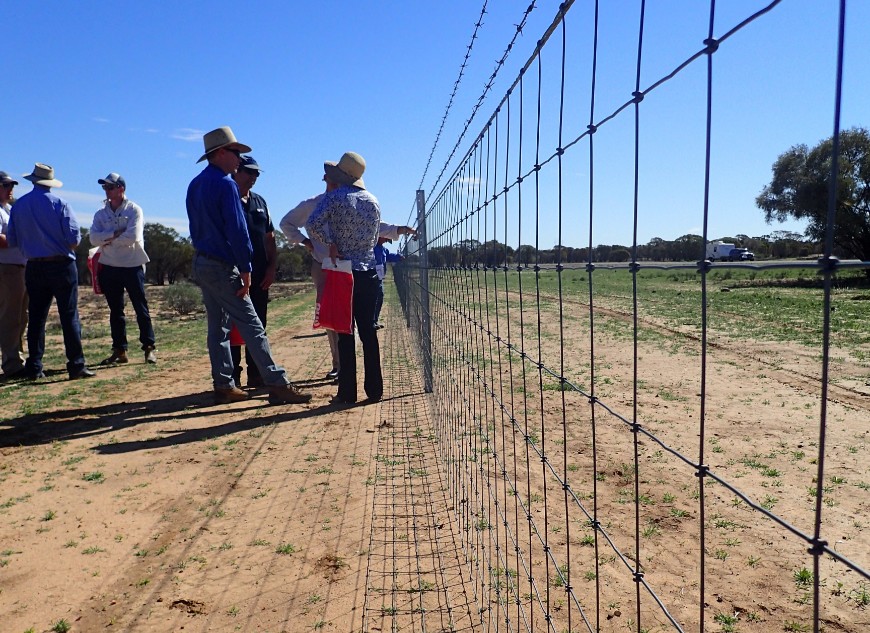
Predator-proof fencing is also used to protect livestock from predation by foxes and wild dogs. Photo: Morgan Gronold, Remote Area Planning and Development Board.
Laws for predator-proof fencing
Exclusion fencing for feral cat and fox control is allowed in all states and territories.
Some activities related to exclusion fencing may be regulated by federal, state or local governments, such as any land clearing. Contact your local council before undertaking any fencing programs.
You must have landholder or land manager permission if fencing on someone else property or public land.
Contact your state or territory for more information on regulatory requirements for your program.
Banner photo: CISS, NFCFMC Program.
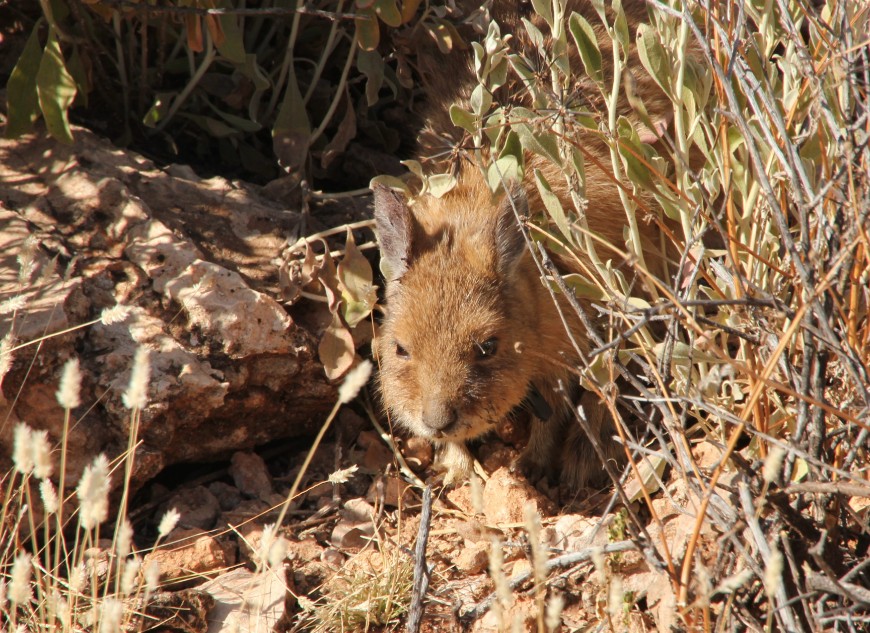
The Mala is extinct in the wild on mainland Australia, primarily due to predation by feral cats and foxes. Photo: Gillian Basnett.
